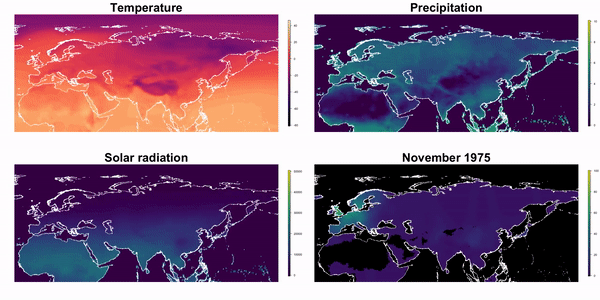Dynamic virtual ecosystems as a tool for detecting large-scale responses of biodiversity to environmental and land-use change
Ecosystems are governed by dynamic processes such as competition for resources, reproduction and dispersal. These shape their biodiversity and how the system responds to change. Current approaches to modelling ecosystems, especially plants, focus on either describing fine-scale processes for individual species or broad-scale patterns for limited groups of plant functional types. Digitisation of herbarium and other plant records has unlocked a wealth of information that can be used to drive models of plant communities and make predictions for their future under different scenarios of climate change. The advent of increased computational capacity and fast, high level programming languages allows for simulation of such landscapes at unprecedented scales. Here, we demonstrate a tool for Ecosystem Simulation through Integrated Species Trait-Environment Modelling (EcoSISTEM), which models plant species across multiple ecosystem sizes, from patches and small islands to regions and entire continents. These simulated ecosystems support the ability to generate many different types of habitat, as well as reproducing different disturbance scenarios such as climate change, habitat loss and invasion. EcoSISTEM also reproduces examples of real-world species distributions by integrating plant occurrence records and global climate reconstructions to simulate plant species throughout the continent of Africa for the past century. EcoSISTEM allows us to flexibly explore the dynamics of tens of thousands of species interacting across a continent. The code parallelises efficiently across multiple nodes on high performance computing platforms, and has been scaled up to run on over 1000 cores. It allows us to study the impact of changes to climate, resources and habitat and investigate real-life mechanisms surrounding climate change and biodiversity loss.
PDF Abstract